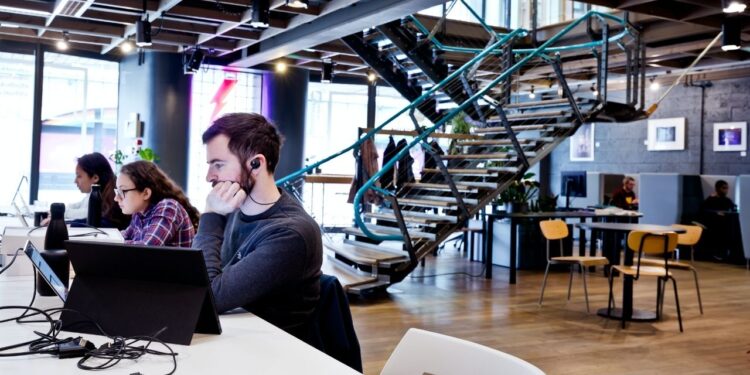In March of 2020, coworking spaces started to be viewed as a inhabitable nightmare in a pandemic-riddled society.
However, as businesses transition into a post-pandemic reality, these offices have positioned themselves as the ideal solution for businesses large and small seeking flexible arrangements.
For Melissa Pancoast, CEO of financial literacy startup The Beans, moving into a WeWork’s San Francisco Salesforce Tower office last May was a much different reality than what it looks like today. According to Pancoast, most offices in the space were rented, but unoccupied.
However, as San Francisco lifted its pandemic restrictions, the WeWork office has returned to its bustling nature.
Now, potential members are lining up to join coworking spaces across the country. In fact, WeWork said that their drop-in offices that do not require a dedicated space have consistently run out.
Although coworking spaces are having a moment, the commercial office industry is struggling to bring bodies back in. Following years of skyhigh valuations, tech stocks have started to dip and are looking at cost-cutting measures to alleviate risk.
That’s where coworking spaces come in. These offices offer low-commitment, fully equipped workspaces and are quickly rebounding to their glory days, with a slightly mature edge.
“Things were still really uncertain as far as what our trajectory was, and the plan is to close significant capital and to grow,” said Pancoast. “We need the flexibility of being able to be in a different space than we could have afforded right in the middle of the pandemic.”
While this shift makes sense on the surface, the short-term leasing model complicates sustainable growth for coworking operators. As a result, the biggest names in the industry are thriving, while the pull of boutique spaces wanes


 Dr. Gleb Tsipursky – The Office Whisperer
Dr. Gleb Tsipursky – The Office Whisperer Nirit Cohen – WorkFutures
Nirit Cohen – WorkFutures Angela Howard – Culture Expert
Angela Howard – Culture Expert Drew Jones – Design & Innovation
Drew Jones – Design & Innovation Jonathan Price – CRE & Flex Expert
Jonathan Price – CRE & Flex Expert












